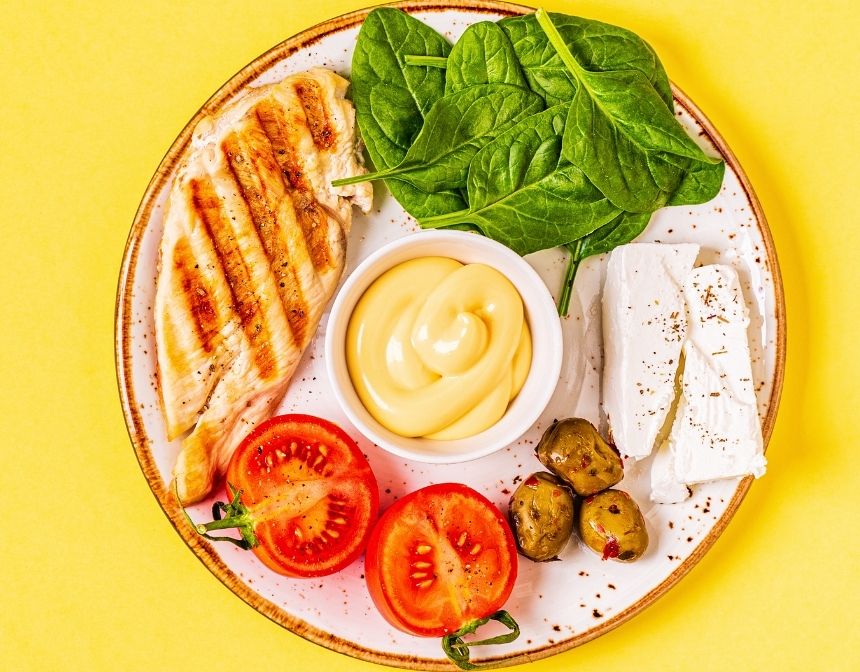Origins of The Toum
Toum, the quintessential Lebanese garlic sauce, has graced the tables of Middle Eastern families for generations. This garlic-packed condiment's roots are deeply embedded in Lebanese cuisine, symbolizing the importance of using simple, fresh ingredients to create dishes with rich, complex flavors. The toum sauce recipe, with its creamy texture and potent garlic punch, is a testament to the culinary ingenuity of the region, transforming a handful of basic ingredients into a versatile and beloved sauce.
Traditionally, toum was prepared using a mortar and pestle for achieving the perfect texture and flavor. However, with the advent of modern kitchen appliances, the process has been simplified, making it accessible to cooks of all skill levels. The key to mastering this Lebanese garlic sauce lies in the emulsion—the slow, steady blending of oil into the garlic and lemon juice mixture, which results in toum's signature fluffy, white appearance.
Today, toum has transcended its Lebanese roots to gain popularity worldwide, cherished for its ability to elevate the simplest dishes to new heights. Whether it's used as a marinade for meats, a spread for sandwiches, or a dipping sauce for vegetables, toum adds a zesty flair that is unmistakably Middle Eastern. As more people seek to explore and replicate authentic international cuisines at home, the toum garlic sauce stands out for its simplicity and flavor, making it a staple recipe for those looking to dive into Lebanese gastronomy.
What To Serve with Toum?
Toum, the zesty Lebanese garlic sauce, is incredibly versatile and can complement a wide array of dishes. Its potent garlic flavor and creamy texture make it an ideal accompaniment to many meals, enhancing flavors and adding a rich, aromatic presence.
Here are some delicious ways to enjoy Toum:
With Grilled Meats
- Grilled Chicken or Chicken Skewers: Toum is a classic pairing with grilled chicken or the popular Lebanese shish tawook (chicken skewers). Its robust flavor complements the smokiness of the meat perfectly.
- Kebabs: Whether you prefer lamb, beef, or chicken kebabs, a dollop of toum on the side adds a deliciously garlicky kick.
- Steaks: For a Mediterranean twist on a classic steak, serve it with a side of toum instead of the usual sauces.
As a Spread or Dip
- Flatbreads and Pita Bread: Spread toum on warm flatbreads or pitas before adding your favorite fillings for an extra layer of flavor.
- Vegetable Crudité: Toum makes a great dip for raw vegetables, turning a simple snack into a flavorful treat.
- Sandwiches and Wraps: Elevate your sandwiches and wraps by spreading toum inside. It's especially good in falafel sandwiches or vegetable wraps.
With Seafood
- Grilled Fish: The brightness of toum pairs wonderfully with the delicate flavors of grilled fish, such as sea bass or trout.
- Fried Calamari or Fish and Chips: Swap out tartar sauce for toum for a garlicky counterpart to these fried favorites.
Other Delightful Pairings
- Potato Dishes: Whether roasted, fried, or boiled, potatoes and toum are a match made in heaven. Try it with crispy potato wedges or mashed potatoes.
- Mezze: Incorporate toum into a mezze platter alongside hummus, baba ganoush, and tabbouleh for a complete Middle Eastern feast.
- Rice Dishes: A spoonful of toum can add depth to simple rice dishes or pilafs, giving them a flavorful boost.
Toum vs Aioli
Toum and aioli are both popular garlic-based condiments, but they hail from different culinary traditions and have distinct characteristics in terms of ingredients, preparation, and flavor profiles. Here’s a breakdown of the differences between toum and aioli:
Origin:
- Toum is a traditional Lebanese garlic sauce deeply rooted in Middle Eastern cuisine. It's known for its potent garlic flavor and is used widely across Lebanon and neighboring countries.
- Aioli originates from the Mediterranean regions of Spain, France, and Italy. It's a type of garlic mayonnaise that has become synonymous with Mediterranean cuisine.
Ingredients:
- Toum is made with a simple combination of garlic, neutral oil (such as canola or sunflower), lemon juice, and sometimes a pinch of salt. It does not traditionally contain egg.
- Aioli is essentially a garlic-flavored mayonnaise, made with garlic, egg yolks, olive oil, and lemon juice. The presence of egg yolks gives aioli a creamier texture and a slightly milder flavor compared to toum.
Preparation:
- Toum is prepared by emulsifying garlic with oil and lemon juice to create a light, airy sauce. The key to perfect toum is the slow addition of oil to create a stable emulsion without the sauce breaking.
- Aioli, similar to making mayonnaise, involves emulsifying garlic with egg yolks and olive oil, often finished with lemon juice for acidity. The egg yolks help in stabilizing the emulsion, making it easier to prepare than toum for some.
Flavor and Texture:
- Toum has a strong, pungent garlic flavor with a fluffy, creamy texture that can be quite potent. It's known for its sharpness and is often used sparingly.
- Aioli has a smoother, more mellow flavor due to the egg yolks and olive oil. The garlic is present but not as overpowering as in toum, and the texture is more akin to traditional mayonnaise.
Culinary Uses:
- Toum is commonly used as a dip, spread, or marinade in Middle Eastern cuisine, often served with grilled meats, falafel, shawarma, or as a condiment for sandwiches and wraps.
- Aioli is versatile in Mediterranean cuisine, frequently served with seafood, vegetables, or as a spread for bread. It’s a common accompaniment to dishes like grilled fish, potatoes, and various tapas.
In summary, while both toum and aioli share garlic as a key ingredient, their differences lie in their additional ingredients, preparation methods, and resulting flavors and textures. Toum is egg-free and features a bold garlic taste, whereas aioli includes egg yolks and olive oil, offering a creamier texture and a more subdued garlic flavor.
How To Store Toum?
Storing Toum correctly is essential to maintain its freshness and extend its shelf life. Proper storage can keep toum delicious for weeks, allowing you to enjoy its garlicky goodness long after you've made it. Here's how to store Toum effectively:
Immediate Storage:
Airtight Container: Transfer the toum into an airtight container. This limits its exposure to air, which can spoil the sauce more quickly.
Refrigeration: Place the airtight container in the refrigerator. Toum should be stored at a cold temperature to preserve its freshness and prevent the growth of bacteria.
Longevity and Quality:
Shelf Life: When stored properly in the refrigerator, toum can last up to a month. However, its peak freshness and flavor are best within the first two weeks.
Separation: If you notice any separation, simply give the toum a good stir before use. The emulsion can sometimes break down during storage, but stirring can help recombine the ingredients.
Freezing Toum:
Freezing Is an Option: For longer storage, toum can be frozen. Spoon the sauce into an ice cube tray for portioned servings or a freezer-safe container.
Thawing: Thaw frozen toum in the refrigerator overnight. It’s normal for the texture to change slightly after freezing; stirring well after thawing can help restore its creamy consistency.
Preventing Contamination:
Use Clean Utensils: Always use a clean spoon or knife when scooping out toum to prevent contamination. This helps to avoid introducing bacteria into the sauce.
Avoid Direct Contact: Try to prevent direct contact with food (such as dipping) in the container that stores the toum to maintain its freshness.
Checking for Spoilage:
Sight and Smell: Regularly check your toum for any signs of spoilage, such as an off smell, discoloration, or mold. If in doubt, it’s safer to discard it.
By following these storage tips, you can ensure that your homemade toum remains fresh and flavorful for as long as possible. Proper storage not only preserves the quality of the toum but also makes it a convenient and versatile condiment to have on hand for enhancing a variety of dishes.





































